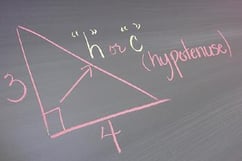Key Differences Between Carpenters and Great Lead Carpenters: Part 1
 Skilled Carpenters are assumed to have the trade skills needed to do the work at hand and to understand construction. But just because a carpenter has these skills doesn’t necessarily also mean he or she has the rest of what it takes to be a successful Lead Carpenter. Below is the first half of a list of key skills a carpenter should have or will need to acquire to become a great Lead Carpenter. I created this list to help carpenters and construction business owners improve their chances of success developing Lead Carpenters and a true Lead Carpenter System.
Skilled Carpenters are assumed to have the trade skills needed to do the work at hand and to understand construction. But just because a carpenter has these skills doesn’t necessarily also mean he or she has the rest of what it takes to be a successful Lead Carpenter. Below is the first half of a list of key skills a carpenter should have or will need to acquire to become a great Lead Carpenter. I created this list to help carpenters and construction business owners improve their chances of success developing Lead Carpenters and a true Lead Carpenter System.

This first list describes the basic skills and thinking skills a carpenter must possess to be eligible to become a Lead Carpenter. These are skills that should be inherent to the carpenter already, learned from an early age through schooling and practical application as a person evolves from childhood to adulthood. If a carpenter does not already possess these skills the chances of success as a Lead Carpenter will be greatly compromised.
In my next article I will discuss the people skills and personal qualities a great Lead Carpenter must learn and develop.
Basic skills needed to be a Lead Carpenter:
 Speaking: Ability to speak clearly including selecting language, tone of voice, and gestures appropriate to a specific audience.
Speaking: Ability to speak clearly including selecting language, tone of voice, and gestures appropriate to a specific audience.- Listening: Listens carefully to what people say, noting tone of voice and their body language, then can respond in a way that shows a true understanding of what is said.
- Reading: Ability to identify relevant facts and locate information in books or manuals. Ability to find the meanings of unknown words and use computers to find information.
- Writing: Ability to write ideas completely and accurately with proper grammar, spelling, and punctuation. Also able to use computers to communicate information in writing.
- Mathematics: Ability to use numbers, fractions, and percentages to solve problems and communicate solutions.
Thinking skills needed to be a Lead Carpenter
 Creative Thinking: Has the ability and is not afraid to use imagination freely to combine ideas or information in new ways. Can easily make connections between ideas that seem unrelated to others.
Creative Thinking: Has the ability and is not afraid to use imagination freely to combine ideas or information in new ways. Can easily make connections between ideas that seem unrelated to others.- Problem-Solving: Can easily recognize a problem, identify why it is a problem, create and implement a solution, and naturally watches to see how well attempted solutions work so they can be revise as needed.
- Decision Making: Can identify goals, suggest alternatives and gather information about them. Can identify and weigh pros/cons and choose the best alternative along with a plan to follow through.
- Visualization: The ability to imagine, strategize and sequence the construction of a building, object or system by looking at a blueprint or drawing.
Don't miss Part-2 of the list
 Be sure to come back here to find the second half of this checklist to learn about people skills and personal qualities a great Lead Carpenter must learn and develop. It will be published in a few days. To be automatically notified via email when new blogs are published simply subscribe to the Design/Builders Blog.
Be sure to come back here to find the second half of this checklist to learn about people skills and personal qualities a great Lead Carpenter must learn and develop. It will be published in a few days. To be automatically notified via email when new blogs are published simply subscribe to the Design/Builders Blog.
Click here to see a Job Description for a Lead carpenter
Other articles to help contractors and construction business owners choose and grow the right carpenters into Lead Carpenters
Evolve From Being A Contractor To Being A Construction Business Owner
Afraid To Hire Production Employees For Fear I Would Run Out Of Work For Them
A lead-carpenter system helps both the business and the employees to grow
Compliance Checklist: Will You Be Ready If OSHA Visits Your Job Site?







